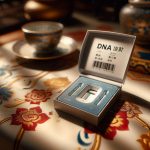In an engaging chat with Stephen Russell, the visionary behind Vyriad, we delved into the groundbreaking realm of cancer treatment. Vyriad stands at the forefront, pioneering a revolutionary approach through the use of specially designed viruses. These aren’t just any viruses; they’re tailor-made assailants that hunt down cancer cells while leaving healthy ones untouched. But their role doesn’t end there. Beyond merely attacking cancer, these viral warriors spark a robust immune response, essentially arming the body’s natural defenses to ward off future threats.
This isn’t just another step in cancer therapy; it’s a giant leap towards altering its landscape forever. The implications are monumental, promising not only to revolutionize how we combat this disease but also to dramatically improve patient outcomes and hope for millions battling cancer worldwide.
What was your experience before starting Vyriad?
My journey began with a dual focus on medicine and research in the United Kingdom, first at Edinburgh University and then at the University of London. The intriguing possibility of leveraging viruses as a revolutionary approach to cancer treatment captured my interest early on during my medical studies. This fascination led me down a path dedicated to mastering virus engineering.
After qualifying as a hematologist, I relocated to London, taking up a position at the University College Hospital. It was there that I dived deeply into laboratory work, culminating in earning a PhD from the Royal Marsden Hospital for my research into virus modification. My quest for knowledge didn’t stop; it took me next to Cambridge. Over seven years, I honed my skills in antibody engineering and finished my clinical training.
The pinnacle of this journey was when I accepted an opportunity at the Mayo Clinic in Rochester, Minnesota. There, I spearheaded the creation of a molecular medicine program specifically targeting cancer through engineered viruses. We had ample resources: 10,000 square feet designated for our lab and eight faculty positions filled by experts eager to contribute. Our efforts bore fruit with promising developments in measles and vesicular stomatitis viruses prepared for clinical trials after receiving all necessary approvals.
In 2015, inspired by our progress and aiming to bridge our discoveries with real-world applications, we launched Vyriad. This venture aimed not just at developing these engineered viruses but also commercializing them for broader use.
Earlier on, recognizing the necessity for specialized support in this niche field led us to establish another entity, Imanis Life Sciences. Designed as a service company, its mission was to back projects focusing on virus-engineered solutions. From generating new viral candidates worth testing clinically to evaluating patient responses during trials, such as monitoring antibody production or virus persistence, Imanis proved invaluable.
Together, Vyriad leveraged Imanis’ capabilities extensively while both companies grew side by side towards their respective missions—paving paths less traveled through innovation in virotherapy against cancer.
Explaining Vyriad’s Purpose
Based in Rochester, Minnesota, Vyriad is on the cutting edge of cancer treatment with its innovative approach of using viruses as a method to fight cancer. The journey from its humble beginnings to securing around $100 million in funding demonstrates a trajectory of success and promise. This substantial financial backing has been crucial, with a significant portion coming from non-dilutive sources.
The company has taken significant strides in infrastructure by acquiring a 30,000 square foot facility on the IBM campus. This space is not just any building; it’s where the magic happens— from GMP manufacturing of viruses to wet labs for virus engineering and spaces dedicated to managing clinical trials.
Speaking of trials, Vyriad isn’t going at it alone. A pivotal partnership with Regeneron Pharmaceuticals two years ago marked a major milestone. Together, they are advancing Voyager-V1, a vesicular stomatitis virus equipped with genes that both inflame tumors and allow for the imaging of infected sites within patients— truly groundbreaking work.
Their collaboration shines through an ongoing clinical trial that blends Vyriad’s viral innovation with Regeneron’s anti-PD1 antibody—a combination showing promising results. Moreover, there’s vibrant preclinical research funded by Regeneron aimed at developing new viruses armed with targeted payloads.
Behind every successful venture is a team that makes it all come together. At Vyriad, about 70 professionals bring their expertise in clinical management, manufacturing, research activities, and general administration daily to push boundaries on what’s possible in oncology treatments.
In essence,Vyriad, bolstered by its strategic alliance with Regeneron, stands at the forefront of transforming cancer therapy through ingenious viral solutions—truly embodying innovation driven by collaboration and deep scientific exploration.
A beginner’s guide to understanding cancer-killing virus treatment
It’s widely recognized that viruses have the potential to wreak havoc on various parts of the body – from the liver being compromised by hepatitis, the immune system getting knocked down by HIV, to influenza causing lung issues. Yet, in a twist of fate, these microscopic invaders hold a promising key in the fight against cancer. Delving into this realm opens up possibilities where we can harness viruses to specifically target and destroy cancerous cells.
In an interesting turn of events, lab-grown viruses have shown an unexpected talent for targeting cancer cells. This discovery has sparked hope. Take, for instance, the measles vaccine – a jab known to billions and associated with preventing disease is also adept at attacking cancer cells directly. This action not only kills cancer but sparks an inflammatory reaction that alerts and mobilizes the immune system against tumor presence more vigorously.
Furthermore, combining virus therapy with checkpoint inhibitor antibodies elevates treatment efficacy. These antibodies have significantly changed how immunotherapy approaches cancer care. The precise targeting capabilities of engineered viruses coupled with their ability to awaken a robust immune response presents a complementary strategy enhancing current treatments.
Cancerous tumors often fly under the radar of our body’s defense mechanisms. But when these smartly modified viruses infiltrate tumors, they expose them to an awakened immune system ready for battle before spreading further within.
By tweaking these viruses’ ability to bind exclusively with tumor cells rather than healthy ones through genetic engineering techniques discovered over 40 years ago by pioneers like Racaniello and Baltimore you enhance their specificity towards malignancies while minimizing harm elsewhere.
The field has grown exponentially since its inception; modern technology now allows nearly any virus’s genome to be altered for better precision in targeting cancer without teaching it potentially dangerous « new tricks. » Instead, adjustments generally involve refining its focus solely on malignant tissue.
This innovative approach represents not just hope but a tangible future direction where viral vectors might play pivotal roles in curing cancers more effectively and safely thanks largely due advances in genetic engineering practices honed over decades.
How are viruses used in immunotherapy to treat patients?

In the United States, a groundbreaking treatment for melanoma involves the use of a special herpes virus. This method requires patients to receive injections directly into their tumors every two weeks over six months. While not the most patient-friendly approach, it marks an important step in cancer therapy.
The ultimate goal is to refine this strategy so treatments can be given through an IV, targeting cancer that has spread without demanding frequent hospital visits. However, introducing the virus into the bloodstream presents challenges—mainly, our bodies quickly build up defenses against it. After the first dose, antibodies are produced which neutralize any subsequent doses before they can do their job.
To overcome this hurdle, researchers are developing viruses administered in just one shot. This single dose aims to weaken tumors and stimulate our body’s natural defense against cancer cells. Though it might not entirely eradicate tumors on its own, this initial assault paves the way for more potent therapies involving immune-boosting drugs.
By coupling this unique viral attack with ongoing immunotherapy treatments, there’s hope for a more effective battle against cancer—a fight where our bodies’ defenses are not only rallied but reinforced for long-term resilience.
What makes immunotherapy superior to traditional methods?
In today’s world, the battle against cancer remains a tough one. While we’ve made strides in treating localized tumors through surgery or radiation, widespread cancer presents a bigger challenge. This is where systemic treatments like chemotherapy and antibody therapies stepped in, aiming to combat cancer cells throughout the body. Unfortunately, they haven’t been successful in all cases.
Enter immunotherapy, a groundbreaking approach that leverages the patient’s immune system to fight cancer on all fronts. The promise of immunotherapy lies in its potential to keep fighting; however, it currently benefits only about 15% of patients with varying degrees of success.
The exploration for more effective treatments led to the introduction of the Voyager-V1 virus. Administered as a single infusion, this virus has shown promising results ranging from no effect to complete elimination of hard-to-treat cancers. Despite these outcomes, success isn’t guaranteed for everyone.
This reality underscores the importance of combining therapies, an area our collaboration with Regeneron aims to innovate in. Through such partnerships, we’re hopeful for breakthroughs that will offer new hope to those battling cancer.
What accounts for the diverse results?
In the realm of medical research, extensive groundwork is laid out through preclinical studies to figure out the optimal way to merge various drugs for treatment. A key technique involves analyzing a tumor biopsy with RNA sequencing to observe gene expression levels. This method has been instrumental in distinguishing between different types of tumors by identifying which genes are highly active and which aren’t.
Findings have revealed that certain tumors lack strong defenses against viruses due to specific gene impairments. Understanding whether a tumor exhibits these vulnerabilities can be crucial, although it’s still too early for definitive conclusions. Nonetheless, early observations suggest this strategy could shed light on which tumors are more or less likely to fall prey to viral attacks.
Another intriguing aspect explored in these studies is how altering the virus itself can significantly affect its impact on the immune system’s response to a tumor. Even when a virus infects only a small number of tumor cells, if it carries specific ‘payloads’, it can trigger a robust immune reaction capable of fighting the cancer effectively. However, there’s a fine line here; enhancing the virus with immune-stimulating proteins might reduce its ability to attack tumor cells directly. Therefore, selecting suitable genes for insertion into the virus becomes critical in maximizing treatment efficacy.
Through such innovative approaches, researchers continue to push boundaries in understanding and combating various cancers, holding promise for developing more effective therapies in the future.
What needs to be done to make these therapies uniform?
There’s growing hope that in the near future, viruses will play a crucial role in battling diseases. While virus therapy is gaining traction, it’s not the sole path being explored. Innovations like cancer vaccines and agents designed to boost the immune system show promise, especially in early-stage research with animals. However, moving from successful animal tests to human treatments is challenging and often doesn’t yield the expected results immediately.
Navigating through regulatory approvals requires demonstrating significant benefits of new therapies over existing ones, usually through extensive clinical trials. An interesting approach involves targeting cancers lacking effective treatment options by providing new therapies to patients who have exhausted all available treatments. If these interventions lead to tumor reduction and improved patient well-being with sustainable outcomes, authorities like the FDA might grant preliminary approval.
Initially, cancer therapies often cater to patients dealing with advanced stages of the disease resistant to current treatments but are eventually tested as potential primary treatments.
The vision for our ongoing virus development project is ambitious yet straightforward: we aim for cancer patients to receive a virus infusion right at their treatment’s outset alongside immunotherapy, boosting its effectiveness from day one. Achieving this goal remains a work in progress but stands as our ultimate objective.




















